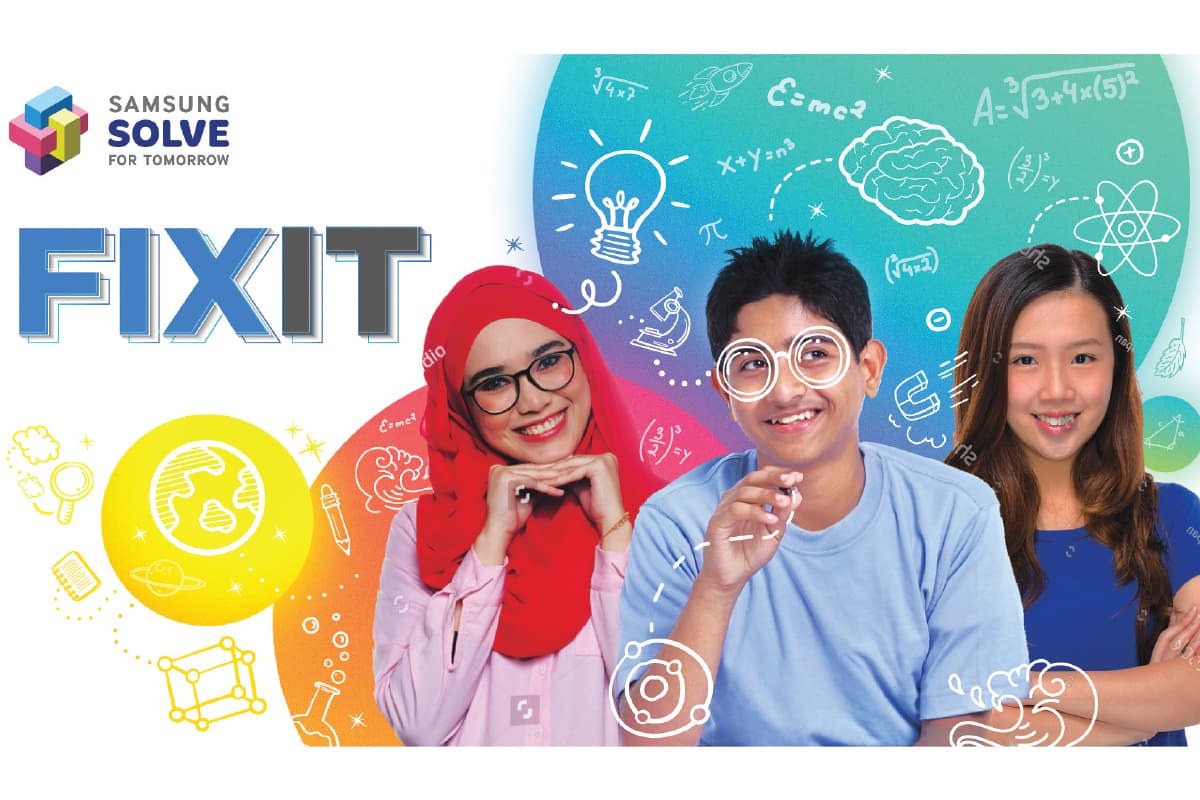
This article first appeared in Digital Edge, The Edge Malaysia Weekly on March 1, 2021 - March 7, 2021
Water supply disruptions in the Klang Valley due to river pollution have been an increasingly prominent feature of life for those residing there. In fact, late last year, water contamination at Sungai Selangor affected more than five million people in the state — the latest in a series of water pollution cases that had disrupted the lives of many urban dwellers.
A group of students from SMK Seksyen 10 Kota Damansara decided that enough was enough. They invented a gadget to address this issue and came out on top at the Samsung Solve for Tomorrow competition, which is open to Form 1 and Form 2 students.
“We started this project because we had experienced water disruption ourselves, which made it hard for us to go about our daily lives,” says Hafiy Addin Hizamel, leader of the winning Team A.I.R.
“We had considered many other themes such as health and education. But due to the frequent problems faced by people and the importance of water, we decided to work on this issue in the hope of making an impact on the community in which we live.”
Team A.I.R comprises Hafiy, Nur Auni Faqihah Fakhrurrazi and Ayuni Azmy, and was guided by teacher Noraini Mohd Zain.
According to Hafiy, the core issue involves sensors currently used by water operators to detect preliminary signs of pollution in rivers. These sensors are submerged in the river water, which damages them over time and increases maintenance costs.
Failure to detect early signs of pollution with these sensors will result in a delayed response and an eventual shutdown of the water treatment plants. Team A.I.R’s solution to this problem was fairly simple and straightforward — introduce a buffer between the sensors and the river water.
Hafiy explains to Digital Edge that a small container containing a sensor is placed in the river. River water is then pumped into the container, which acts as a reservoir, at regular intervals and the water pollution levels are tested. The river water is then pumped out of the container, keeping the sensor relatively drier and thus prolonging its lifespan and maintaining its accuracy.
The sensor and water pumps are connected to Arduino hardware that transmits the sensor’s data wirelessly and allows users to control the water pumps. The students also developed a dashboard that displays the data received from the sensor.
For the prototype, Team A.I.R’s solution was only able to detect and measure the water’s acidity level. However, the sensor can be easily swapped out for more advanced ones that are able to detect more of the variables that contribute to water pollution, says Hafiy. He is confident that water operators will adopt the team’s solution to assist in their water pollution detection as it can help them minimise maintenance costs.
“One of the challenges we have encountered is the hardware design, such as knowing where to place the sensor within the container. For the dashboard, the hardest part would be to design a system that alerts the user when acidity levels are abnormal,” says Hafiy.
“As for the software, it was difficult to fine-tune the timing of the water pump. If the pump is turned on for too long, the container will be flooded. If it is turned on for too short a time, the sensor will not be able to measure the pollution levels in the water properly. There was a lot of trial and error involved.”
He also mentions the challenges of communicating and working together with his team members during the pandemic. Due to the movement restrictions, most of Team A.I.R’s discussions were held virtually on WhatsApp and Google Meet.
To prepare for the competition, Hafiy and his team joined both online sessions and normal classes that teach programming skills as well as the use of basic open-source hardware and software such as Arduino. They also spoke to their mentors, teachers and parents to learn more about the issues surrounding the water disruptions in the Klang Valley.
One of the competition judges, Dr Mas Sahidayana Mohktar, head of University of Malaya’s STEM Centre, says the students were given a choice of four themes — health, education, environmental and social issues — when coming up with ideas for possible solutions. Most of the participants chose environmental issues as these had the most impact on them and their communities.
“We were impressed by their interest, effort and creativity. Perhaps they need to conduct in-depth research and engage in brainstorming sessions with their teammates and teacher on the proposed problem and solution in future participation,” she adds.
“However, in addition to feasibility and creativity, the three teams that advanced to the final phase demonstrated a deeper understanding of the problem that they wanted to solve. Their solution plans were clearer, had a logical flow and an impact on the community.”
She also believes that STEM subjects should be taught in an integrated manner rather than separately, which is currently the status quo. She points out that exposing students to the practical applications of STEM and improving the communication techniques used to teach and assess these subjects can help students increase their knowledge of these topics.
After winning the competition, Hafiy and his team look forward to taking on new projects aimed at serving the community and automating many of the school’s tasks. “For example, our school is conducting a charity event where people provide food for the needy. Right now, the teachers are keeping track of the provisions manually with pen and paper. We would like to develop a solution that can help teachers do this more efficiently,” he says.
Save by subscribing to us for your print and/or digital copy.
P/S: The Edge is also available on Apple's AppStore and Androids' Google Play.


